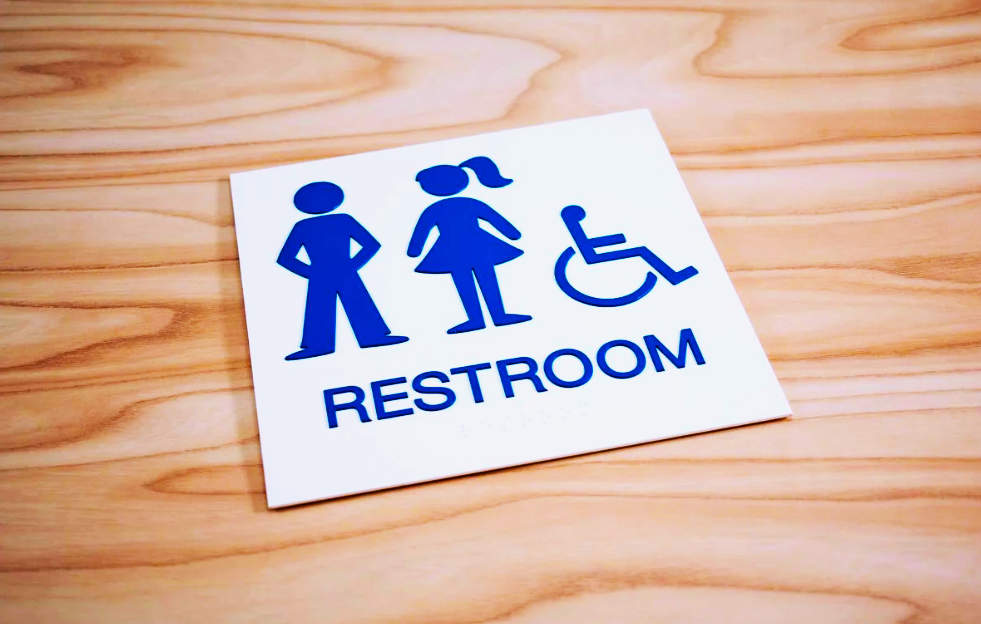Accessibility is an essential aspect of modern architecture and urban planning. One crucial element that facilitates this accessibility is ADA restroom signs. These signs ensure that restrooms are accessible to everyone, including individuals with disabilities. Understanding the rules and importance of these signs can significantly enhance inclusivity in public and private spaces. In today’s increasingly inclusive society, ensuring everyone can navigate spaces comfortably and independently is a priority. ADA restroom signs play a vital role in achieving this goal by providing clear directives that all people can easily interpret, irrespective of their physical or cognitive abilities.
ADA restroom signs are about following regulations and creating an environment where everyone feels welcome. These signs cater to diverse needs and ensure that facilities are user-friendly. Whether in a busy urban skyscraper or a small community library, ADA-compliant restroom signs tell visitors that their independence and privacy are respected. Such inclusivity enhances the user experience and reflects positively on the establishment itself.

Why ADA Restroom Signs Matter
ADA restroom signs are not just a legal requirement; they serve a broader societal purpose. They help in creating environments where individuals with disabilities can navigate spaces without assistance. According to a study by the Americans with Disabilities Act (ADA) Standards for Accessible Design, proper signage can significantly impact the ease with which people with disabilities access public facilities. By providing clear, legible, and tactile information, these signs remove barriers that can otherwise make simple tasks difficult or impossible for individuals with disabilities. This ease of access translates into greater autonomy and confidence, enabling people to participate more fully in community life.
Moreover, ADA restroom signs are a critical step toward social equity. Inaccessible restrooms can create significant challenges and discomfort. Ensuring that signage is inclusive and easily understandable helps to promote equality and prevents the exclusion of any group of people. It’s a simple yet powerful way to make public spaces more welcoming and functional for everyone.
Legal Requirements and Standards
The ADA mandates specific standards for restroom signage, including tactile characters, braille translations, and highly visible pictograms. These standards ensure that individuals with varying disabilities can easily understand and use the signs. Compliance with these standards is not merely about avoiding penalties; it’s about embracing principles of fairness and accessibility. Tactile characters ensure that individuals with visual impairments can read the signage using their sense of touch. At the same time, braille translations provide additional accessibility for those who rely on this form of communication.
Conversely, pictograms serve a universal purpose by providing visual representations that can be understood regardless of language barriers. These standards are meticulously crafted to cover various needs, ensuring everyone can navigate restrooms efficiently, from those with limited mobility to cognitive impairments. Adhering to these guidelines also provides legal protection and can enhance the reputation of businesses and public institutions as being responsible and inclusive.
Enhancing User Experience
Proper ADA restroom signage goes beyond compliance; it enhances user experience by providing precise and concise information. This is particularly important in busy public spaces like airports and shopping malls, where quick and easy access to restrooms is essential. Ensuring that signs are legible, well-placed, and universally understandable can significantly improve the user experience for everyone. For example, strategically placed signs can help reduce confusion and frustration, making it easier for people to find restrooms quickly, especially in emergencies.
In addition, thoughtful signage design can cater to diverse groups, including those with temporary disabilities like injuries or limited English proficiency. The efficiency and clarity provided by ADA restroom signs mean that visitors spend less time searching for facilities and more time enjoying their environment. The positive impact on user experience can translate into increased visitor satisfaction and loyalty, making ADA compliance an intelligent business practice and a legal obligation.
The Role of Universal Design
Universal design is a concept that aims to create environments accessible to all people, regardless of their age, disability, or other factors. ADA restroom signs are a critical component of universal design, as they ensure that facilities are usable by as many people as possible. By integrating universal design principles, businesses, and public spaces can create more inclusive environments that cater to everyone’s needs.
Universal design goes beyond ADA compliance by anticipating and addressing the broad spectrum of human diversity. This approach fosters environments that are not just accessible but also comfortable and intuitive for all users. For instance, restroom signs with high-contrast colors and easy-to-read fonts can benefit aging populations with reduced vision. In this way, universal design principles work hand in hand with ADA guidelines to enhance functionality and inclusivity.
Common FAQ about ADA Restroom Signs
- What materials should ADA restroom signs be made of? Signs should be made of durable materials that can withstand frequent use and cleaning. Materials like high-impact acrylic, metal, or other resilient substances are recommended to ensure longevity and clarity over time.
- Where should ADA restroom signs be placed? Signs should be placed at an easily visible and reachable height, typically 48 to 60 inches from the floor. This placement is crucial for visibility and readability, ensuring that both people standing and those in wheelchairs can easily see and read the signs.
- Are braille translations required on all restroom signs? Braille translations are necessary to ensure that visually impaired individuals can read the signs. Including braille is a fundamental aspect of ADA compliance and significantly enhances the accessibility of restroom facilities for visually impaired individuals.




